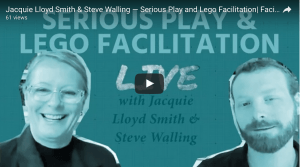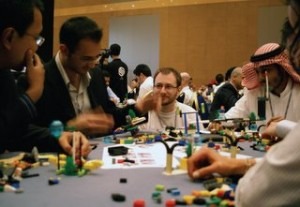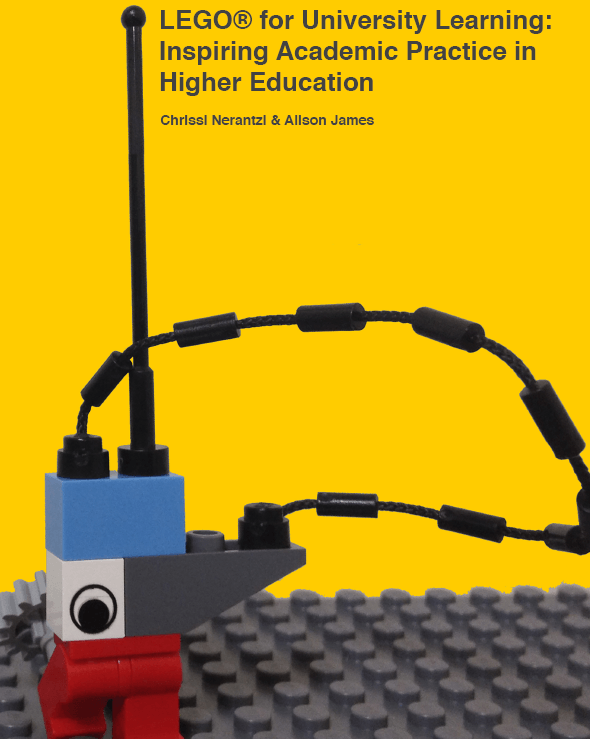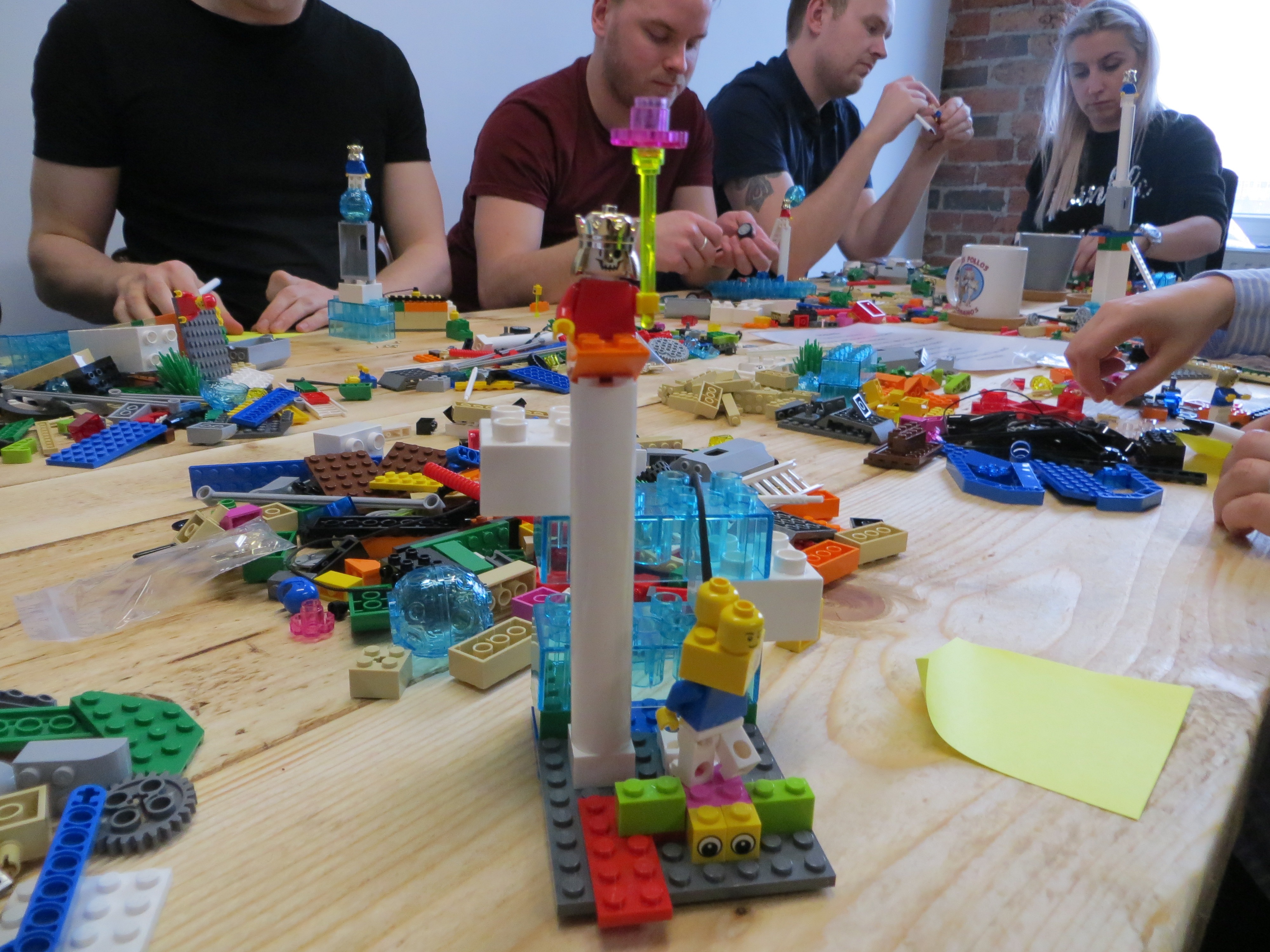I found this 2 year old post about Lego Serious Play by Agile Partnership consultant Ellen Grove from her blog. There is also a great team facilitation case study that includes an interesting responsibility game – a worth read!
I know that I overuse the word “magic” to describe what happens during LEGO Serious Play (LSP), but I can’t stop myself. When a group of people sit around a table, each outfitted with a little box of fairly unremarkable plastic bricks, and start building as a way of exploring a topic of common interest, what happens really is magic: the stories, the laughter, the incredible richness of thought and feeling that can be expressed through just a few minutes of assembling LEGO models and sharing a brief story is dazzling, every single time. Magical, really.
Except it’s not ‘magic’ – no illusions, no trickery, no magic wands. LEGO Serious Play is a deliberate application of basic learning theory and structured facilitation in order to foster creativity and engagement in a business setting. The methodology was initially developed in the mid-1990s by Johan Roos and Bart Victor, then professors at the prestigious IMD business college in Switzerland. They experimented with running strategic visioning exercises with leadership teams in a diverse range of enterprises (the LEGO company being one of them), and after initial successful experiments they approached LEGO for sponsorship for a commercial application of their practices. Thus began LEGO Serious Play, originally a proprietary methodology but now an open-source technology shared under a Creative Commons license.
On the surface, Play using the LEGO Serious Play approach seems ridiculously simple: a facilitator leads a group of people through a quick-paced series of building challenges in response to a few carefully-chosen questions focused on a topic of common interest, perhaps a team problem, or a recent project, or ideas for pursuing a new opportunity. Everyone builds for just a few minutes, then everyone tells a quick story about their model. Participants can ask clarifying questions only about each other’s models. Not exactly rocket science (although my favourite LSP case study is how NASA made use of LSP to bring a engineering safety team together in the wake of the Columbia disaster ).
LSP is, however, grounded strongly in learning theory and epistemology. It draws heavily on the learning theories of constructivism & constructionism, an understanding of play as an important adult behaviour for social bonding, creativity and storymaking, and three different kinds of imagination (descriptive, creative and challenging. There is an excellent paper on the The Science of LEGO Serious Play that describes how the LSP concept was developed based on these principles. Current research into play, such as Dr. Stuart Brown’s intriguing book Play, further supports the premises that creativity and exploration are critical for problem solving, and that play is a necessary adaptive behaviour for all humans to develop social relationships and find creative ways of adapting to complex and changing environments.
LSP works because it engages participants. Everyone builds, everyone talks – people are eager to make and share stories. It works because “thinking with your hands” inspires creativity, and encourages focusing on the most important thoughts and feelings on the topic at hand when building metaphorical representations of complex ideas. It works because the quick pace keeps the conversation moving and forthright – you don’t have time to “have a meeting with yourself” to over-rotate on how to shape and spin your story.
And, perhaps most importantly, LSP is fun! Building and story-telling is fun – there’s a lot of laughter, and I’ve seen some pretty silly things represented in LEGO in order to illustrate a point of view. Emotions can run strong: at a memorable team-building session for a corporate client, one group of participants were on the verge of tears while telling their stories, because they were sharing some important truths with each other. A participant at a conference workshop told me that “I can’t wait to go home and try this with my wife!” (ulp! I really need to put a ‘professional driver on a closed course – do not try this at home’ message in my presentation). Some people are initially put off by the playfulness of the activity – I’ve run several sessions where people have told me afterwards that initially they were skeptical of the whole idea, but after taking part in a modelling session, they get it.
Powerful, generative, creative and fun. Magic!








 Become a LEGO Serious Play facilitator - check one of the upcoming training events!
Become a LEGO Serious Play facilitator - check one of the upcoming training events!